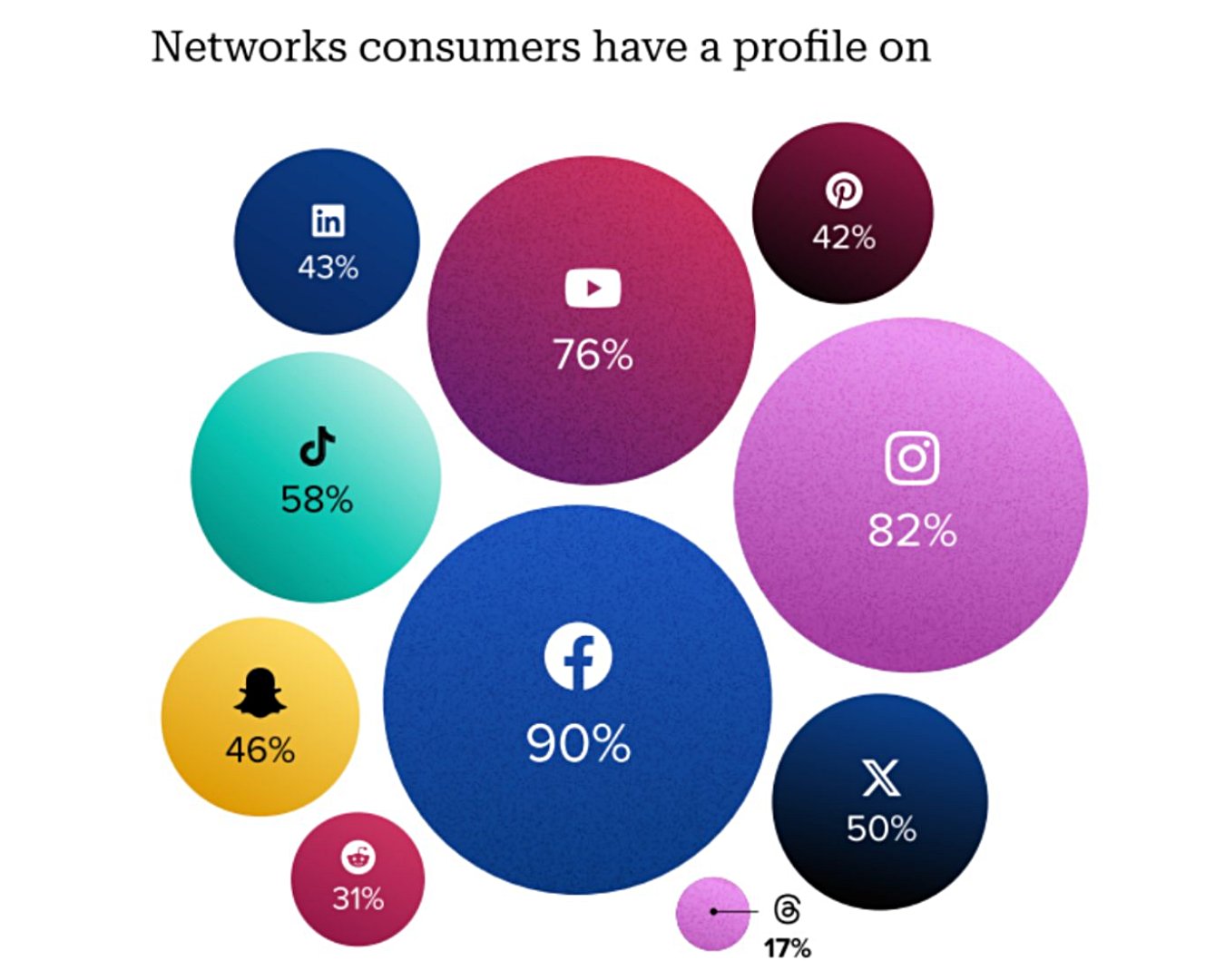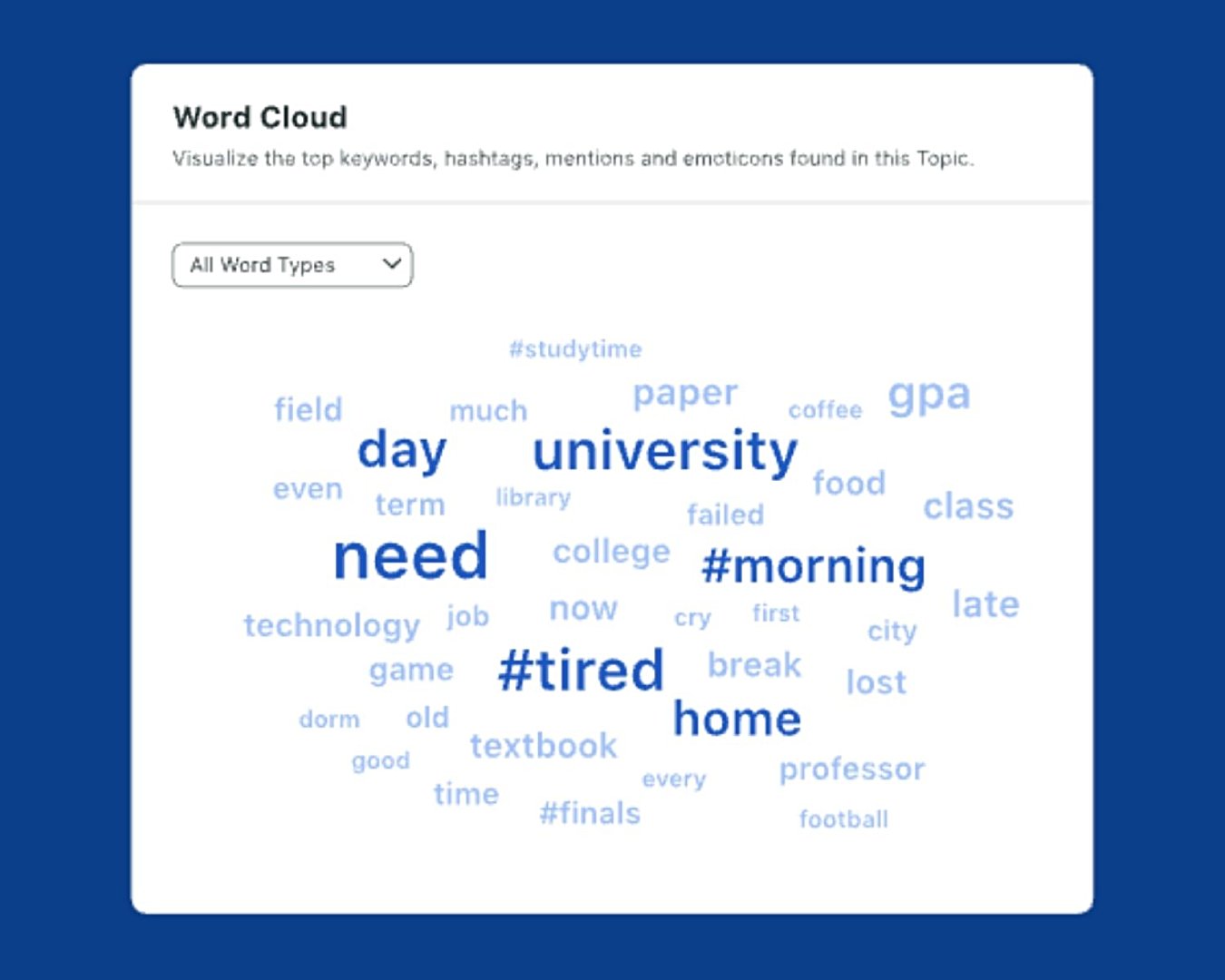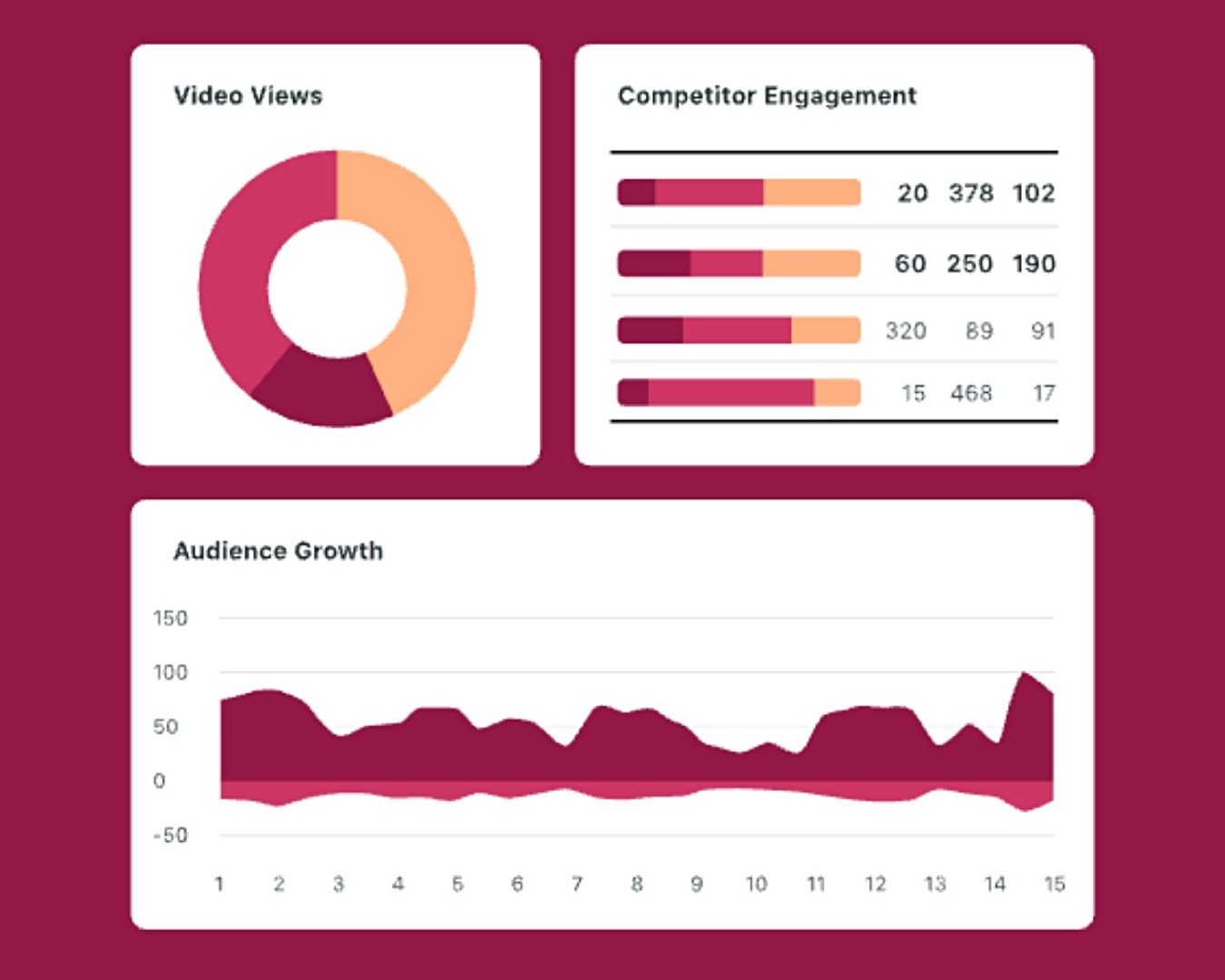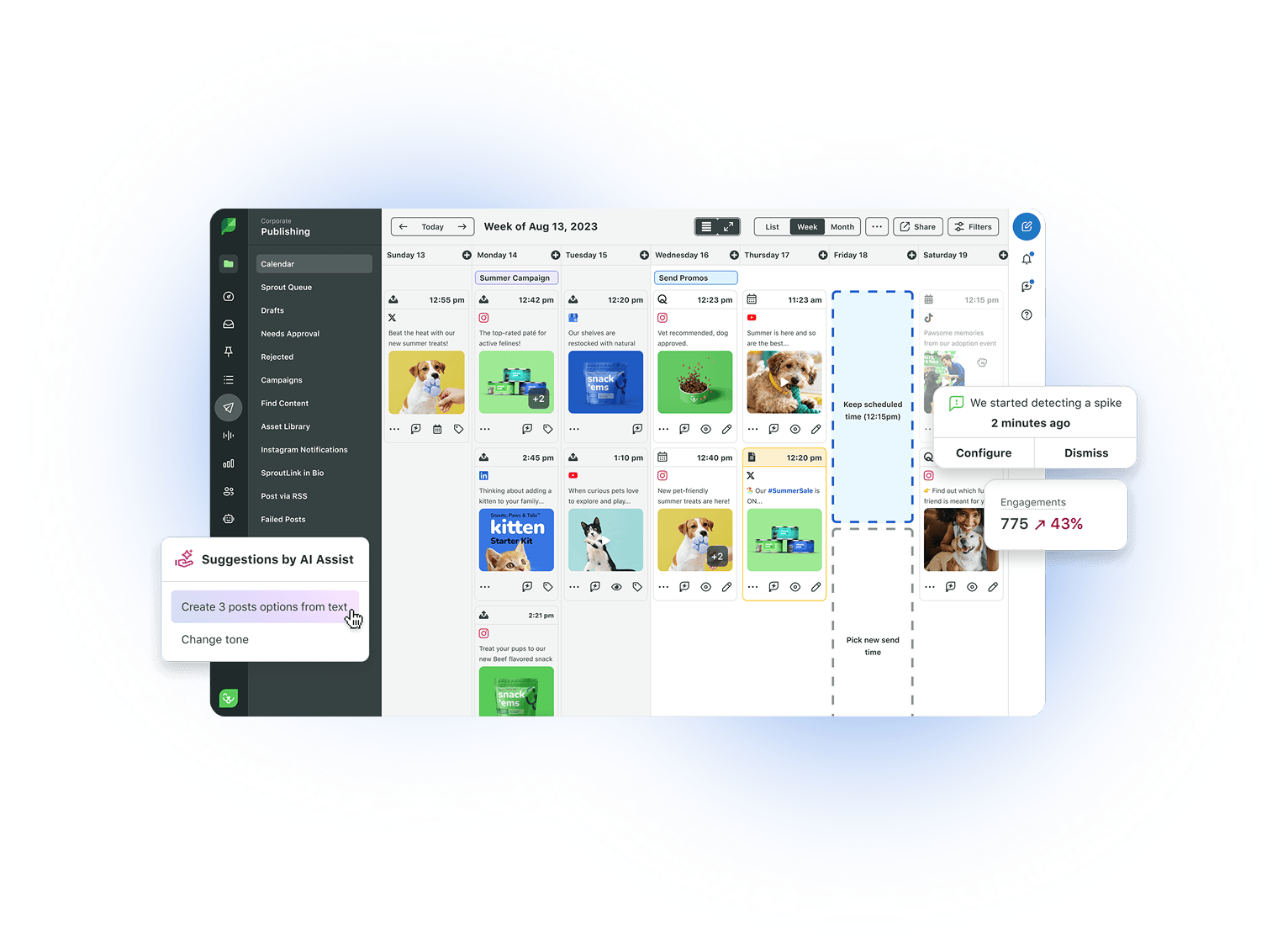Smart strategies for Facebook affiliate marketing in 2026
Table of Contents
Facebook may not be the shiniest network in the social stratosphere, but it still delivers serious reach, especially when backed by a solid Facebook marketing strategy.
The most recent Sprout Social Index found it to be the top choice for consumers, with many saying it would be their go-to if they could only use one network.
That kind of reach makes Facebook a powerful tool for product marketers, especially teams planning, launching or scaling affiliate programs. Consider this your ultimate guide to making them work.
What is Facebook affiliate marketing?
Facebook affiliate marketing is influencer marketing—with built-in ROI and scalability—on the world’s largest social network. It allows brands to partner with affiliates (influencers, content creators or loyal customers with a following) to promote and monetize products through custom tracking links.
Content creators use your brand guidelines, talking points and product links to spin up authentic, compelling stories tailored to their audiences. They get a commission per sale, while you get clicks, conversions, sales and ROI with minimal risk.
Affiliate programs have gained traction across many social media networks. YouTube, Instagram and TikTok each offer unique strengths for affiliate models.
Here’s what sets Facebook apart:
- Precise targeting: Facebook has unmatched reach across demographics and can target specific audiences based on behavior, interests and engagement history.
- Clickable links: The network allows affiliate links directly in feed captions—no extra steps or link-in-bios needed.
- Multiple surfaces: You can run campaigns across Pages, Reels, Groups, Stories, Lives and more.
- Cross-demo reach: Facebook’s user base spans generations, giving you exposure to a broader audience than most other networks.
- Deep-funnel support: Facebook affiliate content can convert viewers into buyers using precise tracking and retargeting, even days after the initial touchpoint.
When it comes to performance on Facebook, conversion-focused, valuable content wins over click-chasing, which is good news for lower-funnel campaigns. The algorithm also favors meaningful interaction, so content that invites engagement—like Q&As in Facebook Groups or questions in Reels—can create big returns.
4 steps for getting started with Facebook affiliate marketing
Affiliate success on Facebook starts with a solid foundation. From identifying the right niche to tracking your results, these steps will help you build a strategy that converts and fits into your broader social media plan.
Step 1: Identify your niche and listen to your audience
Strong Facebook affiliate campaigns rely on a clear understanding of your target audience—and having the right tools can help you get there. Using Facebook’s analytics alongside third-party tools like Sprout’s Social Listening can uncover what people actually care about.
Rather than guessing what to promote, review your top-performing Facebook content, scan the comments and monitor trending conversations. Audience pain points are gold for shaping a relevant affiliate strategy that drives results.
If you’re an outdoor apparel brand, for example, you might notice demand for sustainable hiking gear across Groups or event pages. That insight can guide your affiliate product choices and messaging.
Step 2: Choose affiliate programs that fit your brand
Not every affiliate program belongs in your Facebook marketing strategy. Choose partners whose content, audience and values align with your brand—and whose storytelling already resonates on Facebook.
Source: Facebook
Start by clarifying your goals and target audience. Are you aiming to boost sales, promote a specific product or expand brand reach? What about your ideal customer? Do you know their interests and online behaviors? The answers to these questions will guide which products you choose to promote and the affiliates you decide to approach.
As you identify and vet potential partners, look for the following:
- Audience alignment: Do their followers match your ideal customer profile?
- High-quality, engaging content: Do they create authentic, high-performing posts, not just rack up followers?
- Reputation and trust: Do they reflect your brand’s values and disclose partnerships transparently?
- Clear commission rates and structure: Do their commission terms align with your budget and expectations?
The right partners won’t just amplify your message—they’ll build trust and drive sales too.
Step 3: Build content that drives engagement and conversions
Affiliate marketing on Facebook can live in a lot of places—Pages, Reels, Groups and Lives—and each surface needs its own approach. Here are a few ways to tailor your affiliate content:
- Page posts: Static images or carousels with short, benefit-led copy and a clear call to action work best.
- Reels: Quick, scroll-stopping tutorials, unboxings or “how it works” moments feel native and perform well.
- Groups: Posts in context, especially around active discussions in the product’s category, boost interaction.
- Lives: Real-time demos that showcase the product naturally and Q&As that answer questions on the spot increase Facebook engagement.
No matter where you post, Facebook’s algorithm rewards messaging that considers the audience’s pain points. Leading with a challenge they face—and introducing the affiliate offer as a useful solution—is better than a hard sell.
Certain missteps can hurt performance. Spammy format (like copy in all caps or too many hashtags), excessive posting and poor timing are common culprits. To avoid the timing guesswork in particular, use Sprout’s ViralPost to schedule posts when your audience is most likely to engage.
Step 4: Monitor, test and optimize performance
Once your campaigns are live, tracking performance is key to understanding what’s working. Meta’s native tools are a good place to start—you can use them to measure metrics like CTR, conversion rates and earnings per click.
Layering in extra insights also helps you test more variables and connect more dots. For example, Sprout’s analytics dashboards let you:
- Track performance by affiliate, campaign or content format
- Compare results across different creative types, like images versus videos
- Understand how timing, tone and CTA placement affect conversions
- Get a high-level view of all Facebook content performance, paid and organic
Even small changes (adjusting link placement, creative style or caption language) can reveal major insights. The key is proper tracking—when you tag content accurately, you can trace affiliate revenue back to specific posts, which is especially important if you’re juggling multiple programs or verticals.
Best practices for Facebook affiliate success
Affiliate marketing on Facebook works best when it feels natural, useful and trustworthy. That means creating content that adds value, fits the format, reaches the right people and is transparent from the start.
Here’s how to keep your strategy sharp:
Always disclose affiliate links
This one’s non-negotiable. Facebook’s Branded Content Policies and FTC guidelines require clear disclosure of affiliate relationships. To do this, use tags like #ad or #affiliate, or simply say, “This post contains affiliate links.”
Clear disclosures don’t just keep you compliant—they build trust that leads to clicks, conversions and long-term loyalty.
Play to Facebook’s strengths
To succeed on Facebook, design your affiliate program specifically for the network. That means creating offers that are easy to promote, visually engaging and optimized for conversion, especially on mobile.
Brands get the best results when they promote physical products in action, subscription services with trial offers and lifestyle goods that invite storytelling and community engagement. To help your affiliates create compelling, high-converting content, support them by providing:
- High-quality visual and creative assets for Reels, Stories and carousels
- Mobile-optimized landing pages that load fast and are built to convert
- Clear, ready-to-use referral links with UTM parameters or affiliate IDs
- Strong affiliate incentives like high AOV or recurring commissions
The more frictionless and Facebook-friendly your offer, the more likely affiliates are to run with it and get results.
Drive engagement, not fatigue
People keep scrolling when a Facebook ad feels intrusive or obvious. If you want your affiliate content to perform better, make sure it seems like a natural part of the feed and offers real value.
Here are some tips to keep your content balanced:
- Reels offer loads of flexibility. Try using them for quick tutorials, before-and-after transformations or “how to” moments.
- Affiliate links don’t need to dominate the caption. You can place them in the comments or after a strong hook to keep the post clean and spark more natural interaction.
- Content format and posting cadence matter too. Varying them helps you maintain interest over time and reduce burnout, both for your audience and your team.
To get a clearer picture of what’s working, use social media analytics tools to track which content, formats and CTAs drive clicks and conversions, then build on that performance.
Facebook affiliate marketing challenges to watch for
Facebook affiliate marketing can deliver strong results, but a few common pitfalls are worth anticipating—and avoiding:
Skipped disclosures
Staying compliant with Facebook and FTC guidelines means clearly disclosing affiliate relationships. To meet expectations, include indicators like an #ad tag or a note that “this post contains affiliate links.” Transparency builds trust with your audience and keeps your brand in good standing.
Reach throttling
Facebook’s algorithm may suppress content that comes across as salesy, spammy or link-heavy. Posts that feel native, encourage interaction and lead with value tend to perform better. When in doubt, ask: Does this look like something someone would interact with?
Burnout from managing multiple Pages, Groups or verticals
Running affiliate campaigns across different Facebook Pages or Groups can get chaotic fast, especially when you’re juggling multiple conversations and content streams. Tools like Sprout’s Smart Inbox centralize engagement and lighten the lift using features like content tagging and AI-powered suggestions.
Future-proof your affiliate marketing strategy
With the right approach—and the right tools—Facebook affiliate marketing can become one of your most efficient, scalable channels for driving growth, building relationships and increasing brand visibility.
As Meta continues to change how content gets ranked, discovered and shared, your systems need to stay agile. Tools that support ongoing learning make all the difference. With features for A/B testing, campaign benchmarking and centralized performance tracking, Sprout Social helps you adapt quickly and optimize what works across Pages, Groups and creators.
Whether you’re just starting out or are building on years of strategy, Sprout scales with you, bringing the clarity, automation and insights you need to stay focused on what matters.
Ready to turn your affiliate program into the revenue stream it’s meant to be? Start your free Sprout trial today.
Facebook affiliate marketing FAQs
Do I need a website to start affiliate marketing on Facebook?
You don’t need a full site, but having a fast-loading landing page or link-in-bio tool often boosts conversions, credibility and SEO value. Most affiliate product links work fine in Facebook posts, comments or Lives, but without a clear destination, users may bounce before they buy.
What strategies can I use to promote affiliate products on Facebook?
Marketers see strong results with Reels that feature quick demos, Facebook Group discussions tied to product categories, carousels that show use cases and well-placed affiliate links all around. But beyond format, compelling hooks, smart audience targeting and value-first storytelling make the biggest impact.
What’s the highest paid Facebook affiliate program?
Programs offering high AOV or recurring commissions—like SaaS products, high-end ecommerce brands, subscription boxes or financial services—typically pay the most per conversion.








Share